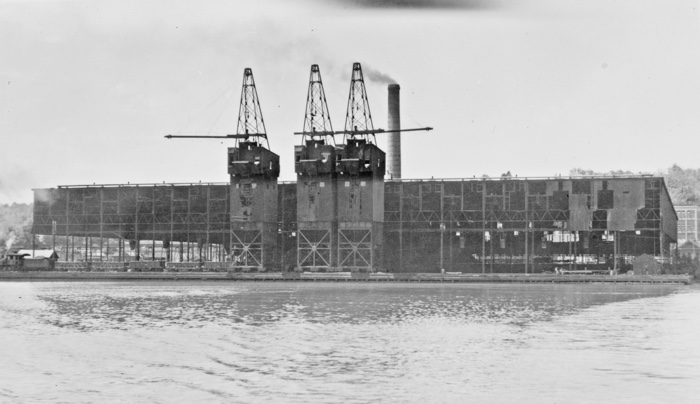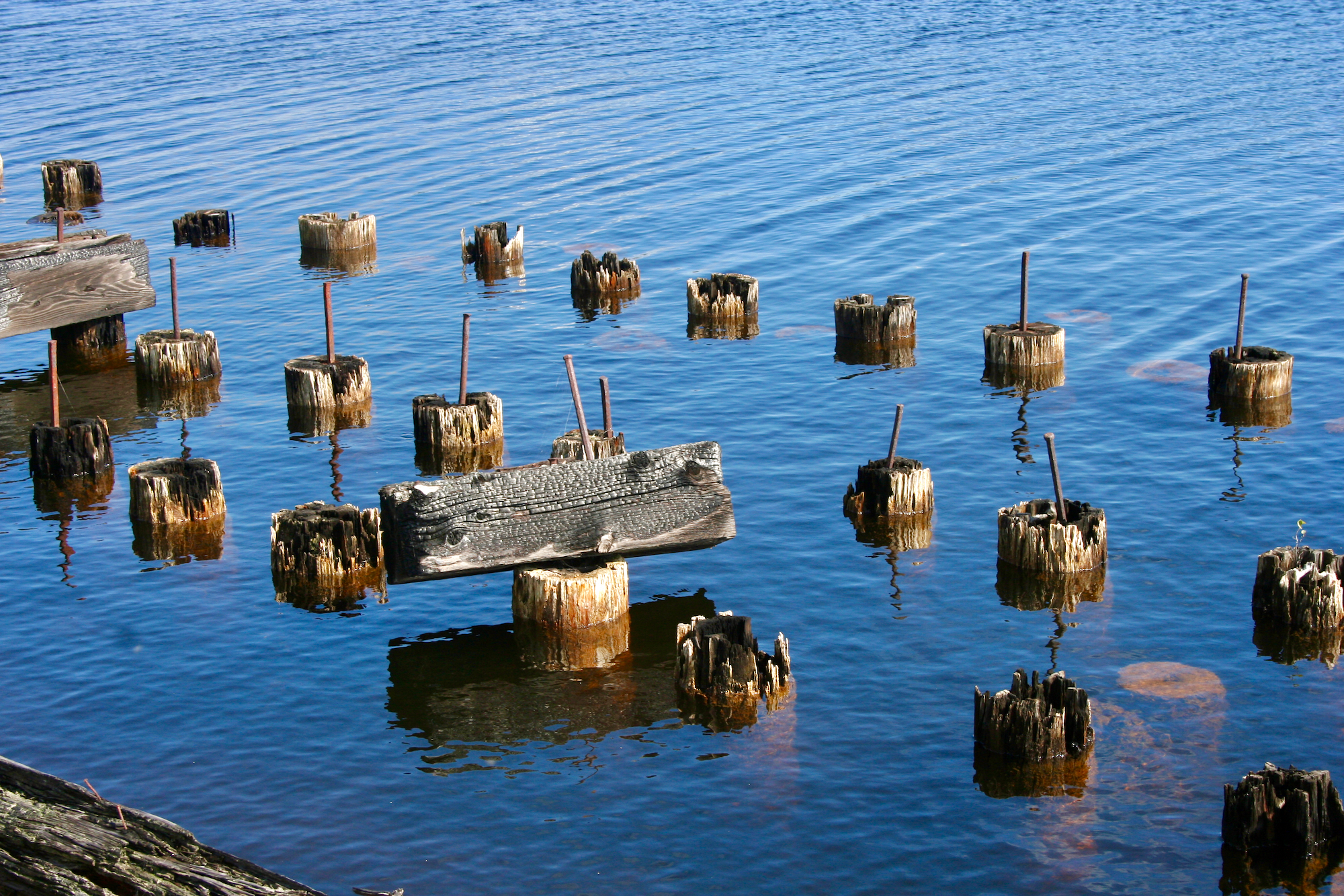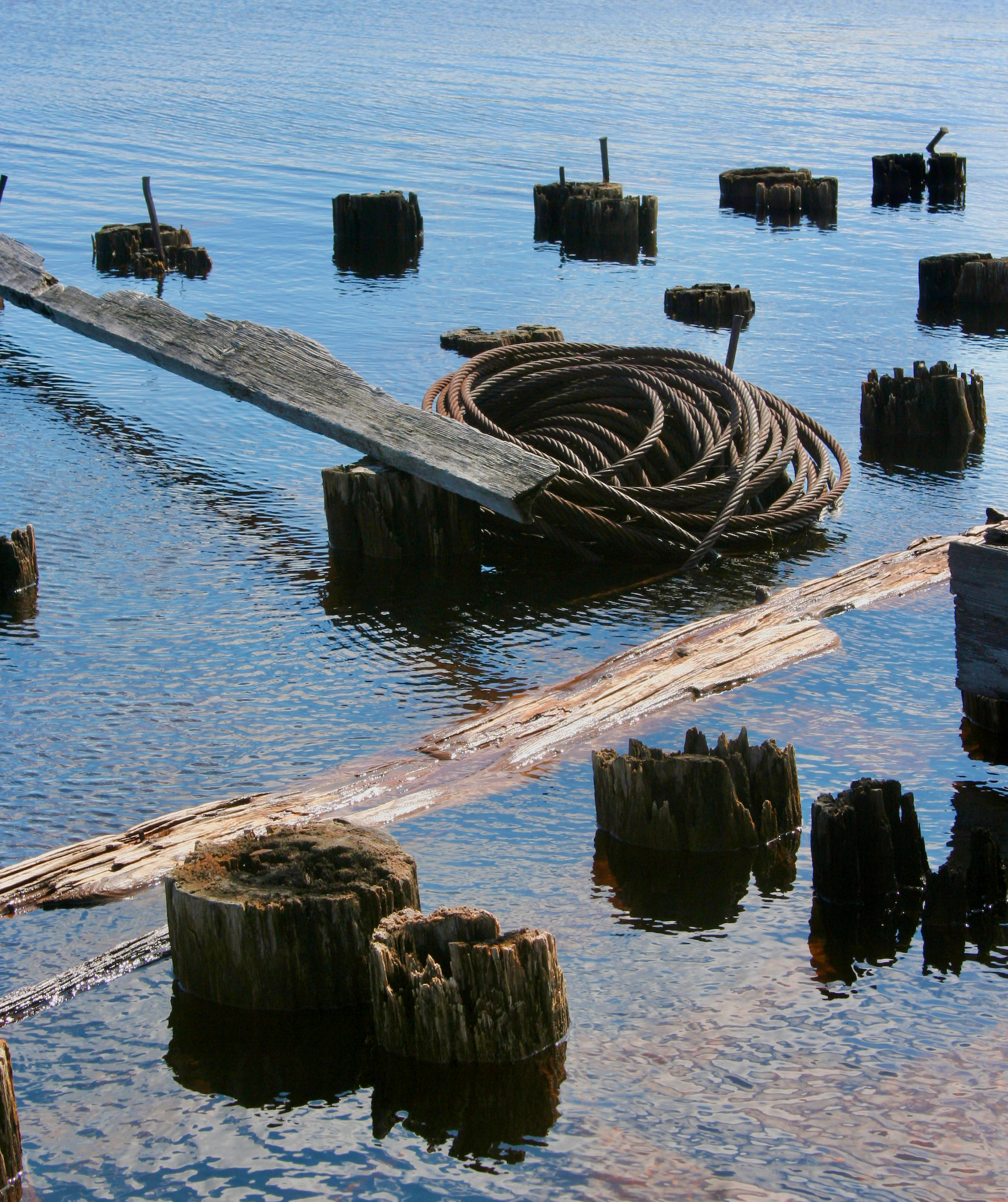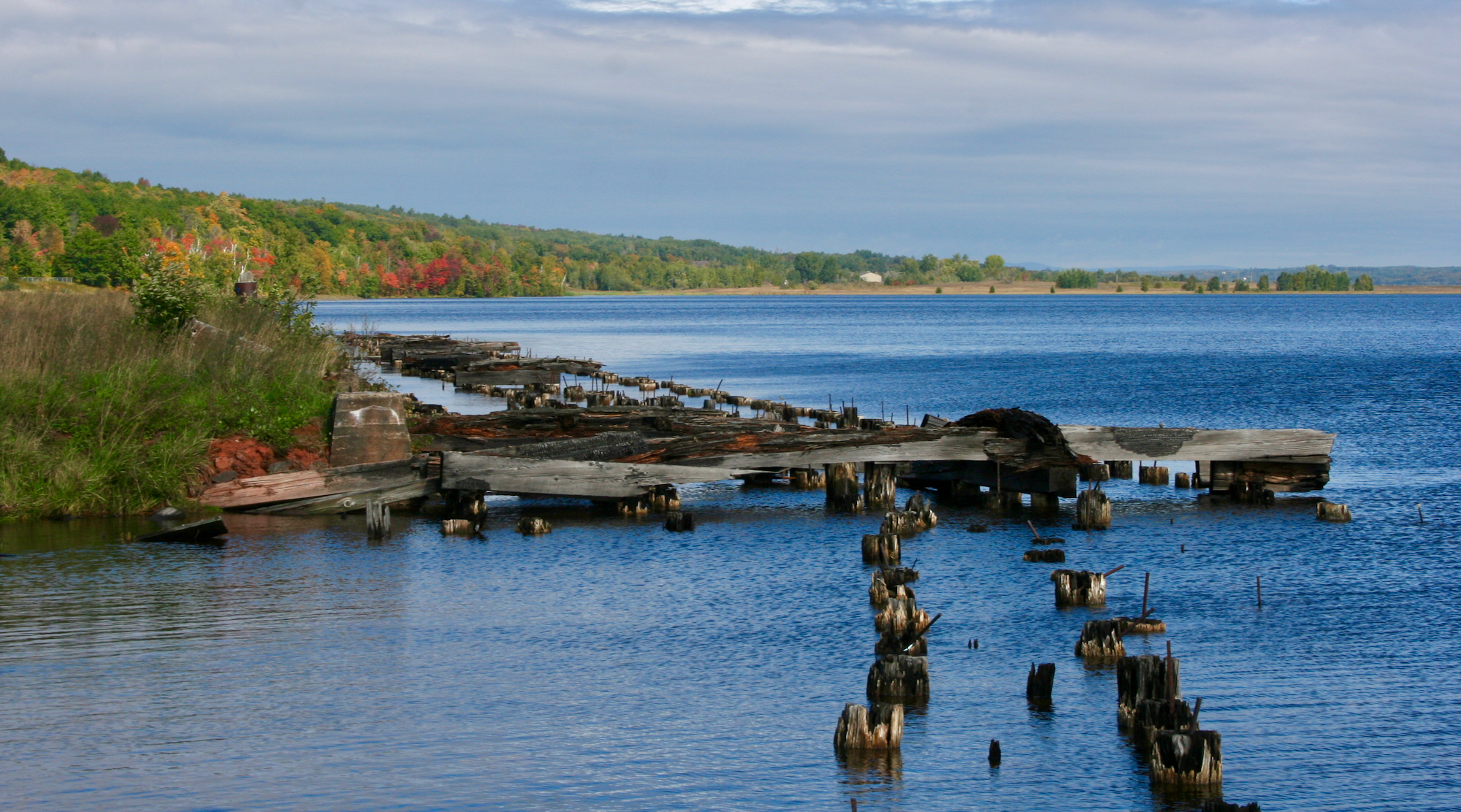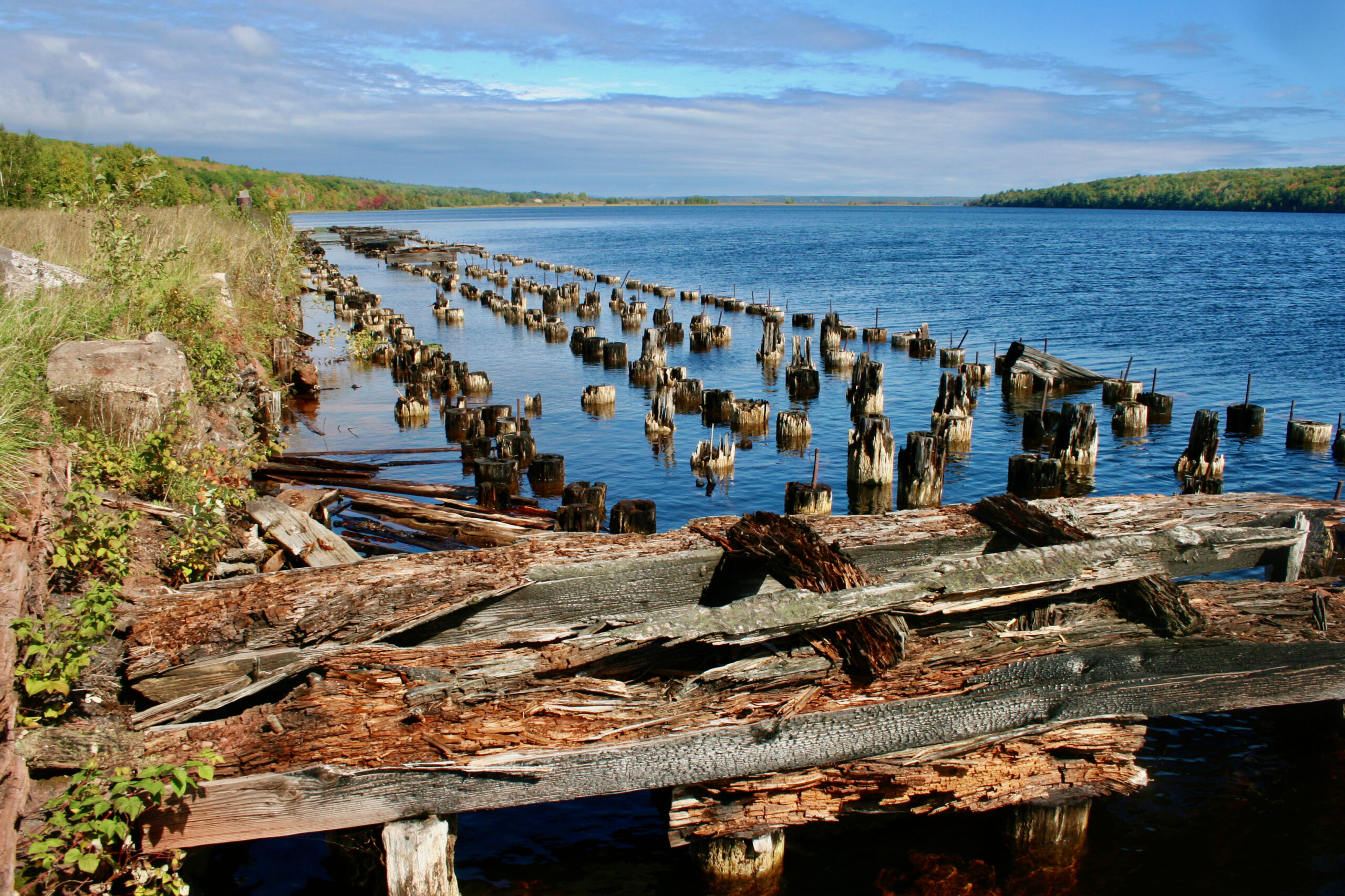Old dock pilings are a dime a dozen in the Copper Country, you can find them scattered along shorelines all across the peninsula in various concentrations and arrangements. It makes sense in a region that had a very active shipping industry at one time. Due to this fact the discovery of these pilings usually do not attract too much attention or interest – they are after all to be expected. However once an a while you come across an old dock of such size and scope that even in its ruined state it leaves quite the impression on those that stumble upon it. One such dock is the old Quincy Coal Dock, whose remains can be found nestled up alongside the western shore of Torch Lake.
The sheer immensity of the old dock is its most impressive feature – its remains resembling a half-submerged forest of narrow tree stumps neatly arranged in four long parallel lines. Scattered across those stumps can be found a few thick timbers – sun-bleached and blackened from a long ago fire. The pilings stretch some 30 feet out into the lake and continue along shore for over 700 feet, a length that could have easily accommodated even the largest lake freighters of the time. Looking out over Torch Lake today it’s hard to imagine the presence of such a large freighter plowing through its serene waters – but a century ago the sight would be quite common.
The freighters that once docked here would have carried coal in their holds, the integral fuel source used to power not just the Quincy’s neighboring stamp mill but its entire surface plant and railroad as well. The coal was removed from the boats by a trio of coal hoists which stood over six stories tall – capable of moving up and down the length of the dock along a pair of rails. At peak capacity those hoists could unload 7 tons of coal each minute, though even at that rate it would take several days to unload a fully loaded lake freighter.
